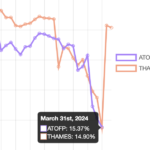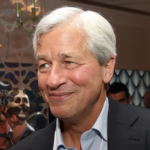Extreme inequality is set to be a big part of the US 2020 elections, and as if on cue the stock market is telling the same story. While breaching all-time highs, the S&P 500 index has increased its market cap by $5 trillion this year, more than the $3.7 trillion added during the whole of 2017, and more than the increase last year before the market plunged in September.
As we’ve noted in previous articles, the contributions to the latest increase are very skewed. The largest 32 companies in the index (at the start of the year) account for half of the increase, compared with 42 companies in 2017. The four biggest companies alone – Microsoft, Apple, Amazon and Alphabet – contributed a nearly quarter of the S&P’s added market cap.
|
|
|
|
Select date interval: |
Show changes in: |
We can also look at the increase in corporate earnings. Here our chart shows the cumulative increase in trailing 12-month (TTM) earnings of the S&P components ranked by starting market cap. The companies currently earn $1.1 trillion per year in total, compared with $950 million two years ago. Compare this 20% overall increase with that of the five tech giants, which have seen their earnings increase by 40% over the same period.
Where does this money go? According to S&P Dow Jones Indices, the companies in the index are currently spending $1.2 trillion per year on dividends and buybacks, or more than their reported earnings. That is what helped add that $5 trillion of market cap.
Who are the beneficiaries of that increase? According to the San Francisco Fed’s triennial Survey of Consumer Finance, US households held $1.3 trillion of stocks in 2016, and $2.7 trillion of investment funds. But 60% of this wealth was held by the top 10% of households as measured by income.
A lot of research is being done on the higher percentiles of the US wealth distribution. The Fed interviews a sample of a few thousand people, but for the higher percentiles it has to do extra work, in effect hunting down billionaires who are willing to participate. Adding to the challenge, the Fed’s quarry most likely understands that their sparse data is being used to shape tax policy.
To see those high percentiles, look at the excellent work by the Urban Institute, which has published visualisations based on the Fed’s raw data. Then there is Saez and Zucman, who have developed alternative measures to the SCF, and are now providing analytical heft to wealth tax proposals aired by presidential candidates.
Although the 2019 Fed survey won’t be published until next year, we can be sure it will be a headline event, and that the $6 trillion increase in S&P capitalisation since the last survey will push the level of wealth inequality to greater extremes.
High-percentile beneficiaries of the market surge don’t just include the founders of the biggest companies, such as Facebook’s Mark Zuckerberg or Amazon’s Jeff Bezos. Less obviously, they include their CEOs, such as JP Morgan’s Jamie Dimon or Google’s Sundar Pichai, both of whose stock holdings crossed the billion dollar mark recently. They include large swathes of the companies’ middle management, whose stock option exercise offsets the share buybacks.
Compare this with the decline in net wealth between 2010-2016 experienced by the lower 40% of the US income distribution. Compare that with four per cent wage growth in the US as a whole, or median real household income which is growing at about 0.8% annually (using end 2018 figures). Then you start to see why presidential candidates such as Elizabeth Warren have made so much progress with proposals whose effect would be to redistribute wealth.
Few would discount the ability of billionaires (self-styled or otherwise) to muscle into US presidential elections and win them. But whatever happens next year, the role that financial assets play in inequality will be at the forefront of the debate.
 Levelling the Playing Field
Levelling the Playing Field
 Barclays and Labour's growth plan
Barclays and Labour's growth plan
 Plummeting bonds reflect souring UK mood for outsourcing and privatisation
Plummeting bonds reflect souring UK mood for outsourcing and privatisation
 Dimon rolls trading dice with excess capital
Dimon rolls trading dice with excess capital